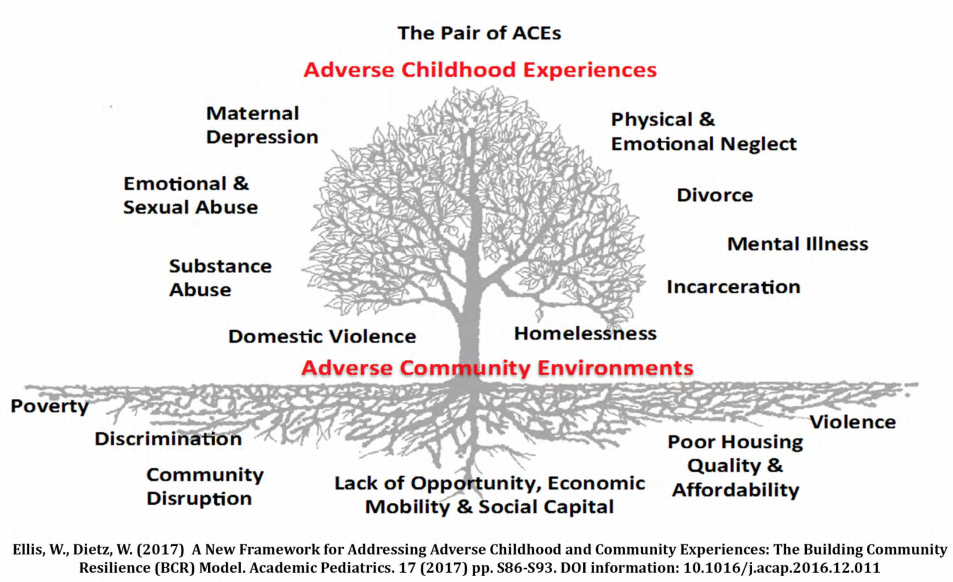Individuals, families and communities face the challenge of achieving and maintaining good health in the face of daunting adversity. Dr. Wendy Ellis of George Washington University Milken Institute of Public Health discusses this challenge as “The Pair of ACEs” – adverse childhood experiences and adverse community environments. An exploration of this model illustrates the importance how adverse community environments must be addressed to effectively support individuals and families.

Often, the soil (the community environment) in which our children and families grow lacks equity, characterized by concentrated poverty, poor housing conditions, higher risk to violence and victimization, and homelessness. This implies a community with little access to supports or buffers that support resilience.
Many of the mental health service organizations in Westchester County provide both individual therapy and run community programs that are designed to support individual and community resilience. These organizations have worked hard to embed a trauma-informed care principles into their operation. Approaches include Trauma Systems Therapy, Child Parent Psychotherapy, and Dialectical Behavior Therapy (also called Trauma-focused Cognitive Behavioral Therapy). (Now that you know some of the terms, feel free to ask your provider what approach they follow!)
Individuals can engage in mind-body practices that have been proven to address the impact of trauma and build resilience. These practices are among the things that we are all encouraged to do to promote overall wellness, from eating in a way that nourishes our bodies to getting enough exercise and sleep. Specific to trauma, coordinated movement and breathing activities such as yoga and mindfulness practices have been shown to decrease the anxiety, negative thought-patterns, and insomnia associated with trauma.
Thinking about the Adverse Community Environments, it is clear that community and cross-sector dialog and action are critical if the occurrence and impact of adverse childhood experiences are to be seriously addressed.
The Building Resilience Communities Collaborative (a project of the George Washington University Milken Institute School of Public Health) describes a holistic approach to fostering community dialog and partnerships that address inequities in the community and promote resilience. The web site includes materials for community conversations and summaries of work at different locations across the US.
Resources for further exploration
While it is logical that the importance of this topic would drive coordinated planning both from the community up and organizations on down, in almost all instances it starts where motivated people chose to step forward and take action. Explore the selected list of resources linked below for ideas
Community Resilience Initiative (CRI) – Inspired by Dr. Anda’s presentation of the ACEs data, organizations from Walla Walla Washington joined to take action. This site offers a number of informative resources and tools for others to copy.
Community Resiliency Model (CRM) – This model (and the linked workbook) teaches skills that people can use to help themselves and their communities. See also this report on its implementation in San Bernadino CA.
New York State Trauma Informed Care Network – A clearing house for resources and events. Also offers access to TRUST (formerly the TIC-OSAT) a free online self-assessment tool for organizations (including schools) to assess their progress in implementing practice change initiatives.
Understanding Trauma: When Bad Things Happen to Good People. This 2 page document outlines characteristics of trauma-informed care and guidance for service providers.
For additional resources (articles, books, films, research reports, videos, and websites), see Learn more about ACES and Resilience.